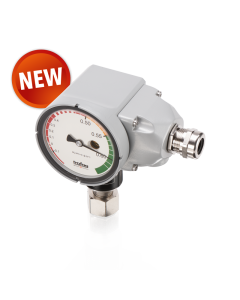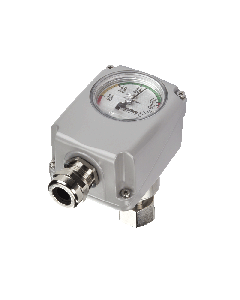Power supply – safe and environmentally friendly
We switch on the light, charge the smartphone and have a coffee. It goes without saying, right? Electricity has become an integral part of our everyday lives and demand is constantly increasing. Not only at home, but also in the industrial sector. But what expertise is needed to ensure that the power supply is safe, reliable and environmentally friendly?
(Extract from the Sustainability Brochure)
Electricity is the backbone of our modern life – from lighting and communication to mobility and industry. Our high quality of life would be unthinkable without a reliable power supply. With global efforts to decarbonise, the demand for electricity is constantly increasing as more and more areas of everyday life are being converted to electric operation. In addition, the operation of electricity grids is becoming more complex due to the feed-in of alternative energy sources such as wind and solar.


What is needed for a secure supply?
Power transmission and distribution grids are necessary for a secure energy supply, and high-voltage switchgear is an important component of these. A little technical jargon: High-voltage systems switch high voltages of 66 kilovolts up to 1,000 kilovolts, i.e. up to 4,000 times more than the mains voltage at the socket.
In order to be able to switch such high voltages safely, gas-insulated switchgear is used in which the high-voltage components are installed in pressurised chambers. These contain highly compressed insulating gas – today still mostly SF6 – which prevents or extinguishes arcing faults and short circuits.
Gas density monitoring – the be-all and end-all
Gas-insulated high-voltage systems do not work just like that. A precisely defined density of insulating gas in the pressurised spaces is required for safe and faultless operation. A leak would be disastrous: it would not only jeopardise the functionality and safety of the switchgear, but would also violate environmental regulations. This is why permanent monitoring of the pressurised chamber is mandatory. Trafag developed gas density monitoring devices back in the 1980s – in co-operation with well-known switchgear manufacturers. The technological centrepiece of the devices is the patented reference chamber system. It is still unrivalled in terms of accuracy and reliability and is used in switchgear all over the world.
Finding clever alternatives
The physical properties of SF6 , the insulating gas commonly used today, make it very suitable for use in gas-insulated switchgear. However, it is also a powerful greenhouse gas with a global warming potential of 22,800, which is why its use is being increasingly restricted and more environmentally friendly alternative insulating gases are being used. However, alternative gases have a lower density than SF6 and also have a lower insulating capacity at the same pressure. The pressure chambers of the gas-insulated switchgear must therefore be filled with significantly higher pressure in order to achieve the same insulating properties. Trafag has realised the necessary adaptations in close cooperation with industrial partners: The electromechanical gas density monitors, the electronic density sensors and the hybrid gas density monitors have been further developed so that leakage monitoring is – and remains – safe and reliable even with alternative insulating gases. This proves that technical expertise and innovation can not only make the power supply safer, but also more environmentally friendly. Also in the future.
Alternatives to sulphur hexafluoride (SF6)
Sulphur hexafluoride is required as an insulating gas for the safe operation of high-voltage switchgear in electricity transmission and distribution. However, it is also a powerful greenhouse gas with a global warming potential of 22,800, making it 22,800 times more harmful than CO2. The industry is working hard to replace SF6 with more environmentally friendly alternatives that are just as safe and effective as insulating gases. Trafag is supporting these efforts with its many years of experience and broad technical expertise, as well as by developing a comprehensive product portfolio for the reliable monitoring of alternative insulating gases.
Trafag Sustainability Brochure
Contact us
Do you have questions about hydrogen and/or hydrogen pressure transmitters? Our specialists will be happy to provide you with expert advice.




